#Fleet Management Software Development
Explore tagged Tumblr posts
Text
Check out fleet management software component requirements, cost factors and how it helps to reduce the costs.
#Fleet Management Software#Fleet Management Software Development#Software Development#Components#Cost
0 notes
Text
What is Enterprise Fleet Management?
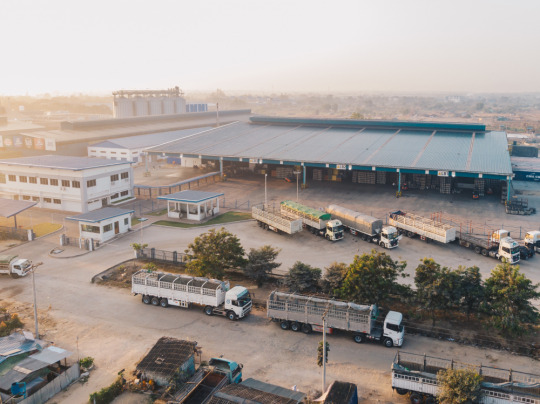
As is revealed in today’s world business environment, any organization must manage its resources appropriately. Thus, for companies and firms having major operations related to transportation and logistics, it becomes even more essential to manage their fleets.
Now, let’s start with the basics: what does enterprise fleet management mean? Now let’s discuss this idea and figure out how it can be of great benefit to the business processes.
Understanding what is Enterprise Fleet Management
Fleet management within an enterprise could be described as a strategic approach to managing and supervising such a company's vehicle fleet. The areas include its acquisition and maintenance, driver and vehicle management, and laws governing the automobile industry. Fleet management is prospective to optimize the operating costs and enhance the safety and productivity of both fleets and their drivers.
In an enterprise environment, fleet management goes beyond tracking the vehicles; it is more about getting improved ways of running organizations. Fleet management is important irrespective of whether it involves delivery vans, trucks, or even corporate cars if the business owns a set of cars for business use.
The outcome highlights the fundamental issues of fleet management.
Vehicle Acquisition and Disposal: Picking the correct car for your fleet, beginning from procurement to the time of disposal.
Maintenance and Repair: Managing to schedule vehicles for maintenance and repairs regularly to make sure that they are in good working condition to reduce time loss.
Fuel Management: Fuel efficiency management by controlling consumption and considering these to minimize fuel expenses by using fuel-efficient driving techniques and other energy resources.
Driver Management: Incorporating training and supervision of drivers as well as planning meals nt to support safety, compliance, and efficiency among the drivers.
Compliance and Risk Management: The safety of all the used vehicles as well as the used drivers with brutal and international requirements and managing of risk exposures of operating fleets.
Here we will discuss the concept of Fleet Management Software. Inefficiently managing all these components, many businesses turn to the use of fleet management software. This is because it acts as a platform for accessing any information regarding the fleet, including real-time data and automated operations of the fleet.
Key Features of Fleet Management Software
GPS Tracking: Precise vehicle location in real-time to increase efficiency and controllers.
Maintenance Scheduling: Schedule reminders in case of preventive maintenance and repairs to avoid ‘bottlenecks Management: Proper equipment that tracks fuel usage and gives an indication of wasteful activities.
Compliance Management: Material properties garages need to comply with set safety measures as well as regulatory requirements.
Driver Performance Monitoring: Measures to monitor and measure drivers’s performance, detect their training requirements, and incentivize them over safe behavior on roads.
Why Enterprise Fleet Management is So Important
To large companies, fleet management is not only limited to planning on how to ensure that vehicles are running. It’s about being able to harness data and technology in a way that will put you ahead of the competition. Effective management of fleets is known to have numerous benefits, such as cutting costs, satisfying customers, and reducing risks involving drivers and cars, among others.
However, due to emerging issues such as global warming, companies are now focusing on the use of fleets to be environmentally friendly. This is done through the optimization of routes, timely maintenance of vehicles, and training of the drivers to ensure they are conscious of the impact they make on the environment.
Being a web-based service, the most advantageous aspect related to an FMS or a Fleet Management Software Development Service is that it can be easily and effectively utilized across the corporate fleet range.
This has led to the increasing need for the development of fleet management software to be able to meet the expanding market need. Custom software, as the name suggests, is designed to improve organizational operations to suit a company’s needs, making it more flexible than packaged software.
A fleet management software development service typically includes
Consultation and Needs Assessment: Ah, awareness of the particular requirements and objectives of your fleet. You need to hire a professional fleet management software development company.
Custom Software Development: Constructing a custom fit that incorporates into the complex structures of the organization and fits the needs of the organization perfectly.
Integration with IoT Devices: The use of Internet of Things (IoT) devices such as GPS trackers or sensors to input real-time information and data.
Ongoing Support and Maintenance: Needed to make sure the software will continue to include all the features and incorporate the latest technologies and that it will cover all current needs of the business.
Conclusion
Okay, then, Fleet management is a system that encompasses all activities that involve control of a company’s fleet of vehicles with the use of the latest technologies in software and quality practices. Fleet management is not only a good idea but a necessity for any business that depends on transportation, where proper management of the company’s fleet is critical to achieving success.
Let it be a handful of vehicles or a multitude, the appropriate strategy in fleet management as enhanced by software changes the equation, provides steps towards optimizing your operations, lowers costs, and enhances the performance of an organization. The fast advancement of technology means that the means and ways used in the implementation of the strategies by the f managers are ever-changing and therefore a very promising industry to follow.
#business growth#fleet management#fleet maintenance#enterprise software#enterprise application development#business solutions#software#trending#viralpost#viral trends
2 notes
·
View notes
Text
How to Start a Taxi Business in New Zealand with the Right Taxi Software
Are you planning to start a taxi service in New Zealand? With growing demand for reliable and tech-enabled transportation services, now is the perfect time to launch your own taxi company. Whether you want to operate locally or expand nationally like YourRide, one thing is clear: you need the right taxi software to make your business successful.
Why Taxi Software is the Backbone of a Modern Ride-Hailing Business
Today’s customers expect more than just a ride. They want real-time bookings, transparent pricing, in-app payments, and live tracking. To meet these expectations and operate efficiently, you need feature-rich taxi operator software that simplifies your backend and enhances the user experience.
A powerful taxi dispatch and management system helps you:
Accept and manage bookings instantly
Monitor your taxi fleet in real-time
Optimize driver allocation and routes
Provide mobile apps for drivers and passengers
Track payments, ratings, and performance in one place
This is where Mobility Infotech becomes your best ally.
Mobility Infotech: Leading Provider of Taxi Operator Software in New Zealand
Mobility Infotech specializes in building end-to-end taxi software solutions for startups, local fleet owners, and enterprise-level ride-sharing businesses. If you're inspired by companies like YourRide and want to create a professional, scalable taxi platform—Mobility Infotech can help you make that happen.
Key Features of Mobility Infotech's Taxi Software:
Real-Time Booking & Dispatch System
Let customers book a ride in seconds and get matched with the nearest driver instantly.
Branded Passenger and Driver Apps
Offer easy-to-use mobile apps that mirror global standards—complete with live GPS tracking, fare calculator, and reviews.
Advanced Taxi Fleet Software
Track vehicle availability, driver performance, fuel usage, and maintenance with intuitive fleet management tools.
Admin Dashboard & Analytics
Control your entire business from a central dashboard—monitor trips, payments, customer feedback, and more.
Multiple Payment Gateway Integrations
Accept card payments, wallets, and local options to suit New Zealand customers.
Scalable & Customizable Platform
Whether you start with 5 taxis or 500, the software is built to grow with your business.
1 note
·
View note
Text
Fleet Management System for Modern Transportation Needs

Transform the way you manage your vehicles. A fleet management system is essential for ensuring efficiency, compliance, and profitability. Logistifie’s platform gives you real-time insight into your entire fleet—tracking location, performance, fuel usage, and maintenance schedules. The intuitive dashboard lets you make informed decisions while keeping everything under control. It’s built for transport companies looking to grow their fleet and minimise operational risks. Improve productivity and lower costs with a smart fleet management system.
#dispatch system#online taxi dispatch system#cab dispatch system#software development#software#transportation#driverapp#fleet management software#fleet management solution#driver app#passenger app
0 notes
Text
AI and Machine Learning Are Shaping Fleet Management Software | SSTech System

AI and machine learning are rapidly transforming fleet management software, revolutionizing how fleets are managed in logistics and transportation.
Thus, using these technologies, the fleets’ managers can increase efficiency, decrease expenses, and implement safety measures innovatively. It is essential to understand what constitutes fleet AI, how the application powers fleets, and the transformation benefits it affords FMS.
What is fleet AI?
Fleet AI is a system that uses AI and machine learning in the executive of vehicle fleets. This technology involves applying data analytics on various aspects of the fleet and using prediction models and decision-making tools to improve these aspects.
Talking more about AI in fleet management, the following options are essential fleet route optimization that helps improve the daily route spending and, based on that, carries out effective and efficient work. Predictive maintenance will help minimize the risks and costs associated with vehicle breakdowns and maintenance.
How is AI used in fleet management Software?
AI and machine learning are utilized in fleet management in several key areas:
Route optimization
Current technologies such as artificial intelligence implement real-time data information systems and predictive analysis when determining routes accordingly Al in fleet management systems. These systems use traffic flow patterns, weather forecasts, and other past information to alert drivers to the most effective roads and fuel-efficient methods.
Predictive maintenance
Machine learning in fleet management is used to diagnose potential faults in vehicles, depending on the analysis of performance data. Since these machines are costly to repair, this proactive approach minimizes the breakdown time of the machinery while at the same time making the required maintenance in advance, thus cutting on cost.
Driver behavior monitoring
Real-time data captured using AI in fleet management systems can reveal information about driving style, including hard braking or nail acceleration. It helps train seasoned and new drivers, enhance road safety, and alleviate frequent breakdowns of transport facilities.
Fuel management
AI and machine learning can optimize fuel consumption by analyzing data from various sources. They help identify efficient routes, monitor fuel usage, and detect irregularities like theft or wastage.
Automated reporting and compliance
Automotive industry and logistics professionals can save time, report compliance, and automate the process using AI-powered fleet management software. This saves time when manually compiling documents for the fleet managers and also provides accurate records and information.
Advantages of AI and ML in FM software solutions

The integration of AI and ML in fleet management software offers numerous benefits that enhance the efficiency and effectiveness of fleet operations:
Improved efficiency
AI and machine learning help different aspects of fleet management, from planning and implementing the most efficient routes to scheduling the times for vehicle maintenance. This leads to an enhancement in costs since healthcare resources are utilized optimally and efficiently.
Enhanced safety
Fleet analytics enables real-time analysis of driving behavior and vehicle performance, helping detect potentially hazardous conditions and minimize accident risk. This enhances monitoring and maintains high safety standards.
Cost Reduction
Reduced operating costs are some of the benefits that come with the use of AI in fleet management platforms, such as predictive maintenance and efficient fuel consumption. These include a bit of downtime and increased fuel consumption because when a manager reduces these aspects, they cut costs significantly.
Better decision making
AI in fleet management involves using technology to determine fleet managers’ decisions, given past data about a fleet’s performance. Data analysis lets managers be informed while making decisions on any aspect concerning the total fleet.
Scalability
The current generation of fleet management software often integrates artificial intelligence and machine learning, making the software solution very scalable. These systems offer flexibility regarding fleet size. They can scale easily, allowing the business to grow without needing to overhaul the existing systems.
AI in supply chain and logistics
Artificial intelligence in logistics and supply chain management has also changed the overall logistics field. When the supply chain is managed through artificial fleet management systems powered by artificial intelligence, it is much easier for companies to understand how the different parts of the supply chain network are performing.
SSTech system solutions and AI development services
Firms like SSTech System Solutions are well-positioned to offer the AI development services needed to strengthen fleet management and logistics. These services include designing and implementing tailor-made fleet management platforms suitable for the business, regardless of size, from a one-man business to a vast logistics company.
Mobile application development for fleet management
The advent of mobile applications and optimizing their use in managing vehicles has also added to the technological advancement of AI in fleet management systems. These applications offer open access to actionable data, allowing fleet managers to make decisions on the move.
Fleet management software of the modern type is being supported and developed by various companies that mainly focus on Android app development and iOS Application Development and can offer new products that perfectly fit the existing strategies.
Data analytics in fleet management
One can also discuss the importance of data analytics in fleet management and how it is crucial. Asynchronous methods like AI and machine learning help analyze large datasets to improve fleet management. Data analytics plays a crucial role in AI-driven fleet services, identifying trends and forecasting outcomes.
Fleet Management solutions and modern fleet management software
Modern fleet management software using artificial intelligence technology is transforming the logistics sector. New-generation software products provide a solution set to perform all operational activities of fleet management. They offer all the solutions required to operate fleets practically and legally, from route optimization to compliance.
Conclusion
Applying AI and machine learning to manage fleets has extended its benefits into fleet management software. With these technologies, fleet managers can optimize the various aspects of operations, such as efficiency, protection, and cost reduction.
In the logistics industry, it’s crucial to assess how AI-based fleet management systems can enhance efficiency and competitiveness. AI development, mobile app development, and data analytics are key to advancing fleet management with AI and machine learning.
#mobile app development#sstech system#webdevelopment#appdevelopment#b2b#business#flutter#itsolutions#india#appsdevelopment#sstechsystem#Android app development#AI development services#machine learning#AI development#fleet management systems#transforming fleet management software#logistics solution#australia#usa#it consulting
1 note
·
View note
Text
Today, we will look at the key features that a GPS tracking software should have, find out when it is better to choose open source or commercial software, and look at one of the popular GPS tracking systems to have more understanding of this type of solution.
#gps fleet management#gpstrackingsoftware#outsourcing#software development#web development#staff augmentation#custom software development#it staff augmentation#custom software solutions#it staffing company#it staff offshoring#custom software
0 notes
Text
The Future of Fleet Management: Trends and Innovations Shaping the Road
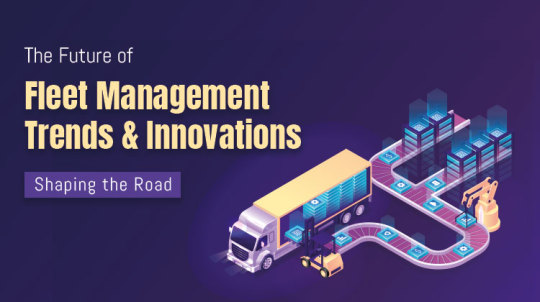
The logistics industry, often referred to as the lifeblood of our global economy, orchestrates the seamless movement of goods across vast distances. From delivering groceries to medical supplies, it ensures that businesses thrive, and societies function smoothly. Yet, at the core of this intricate system lies a critical component: fleet management.
Traditionally, fleet managers relied on clipboards, spreadsheets, and a fair share of guesswork. But today, a seismic shift is underway—a transformation fuelled by cutting-edge technology. Buckle up, because the future of fleet management promises to be a high-speed ride, and its IT professionals, entrepreneurs, and logistics experts who will be at the wheel.
In this blog series, we’ll delve into the dynamic landscape of fleet management, exploring trends, innovations, and strategies that drive efficiency, safety, and sustainability. From optimizing routes to embracing electric vehicles, we’ll navigate the twists and turns of this industry’s evolution.
The Power of Data: Fleet Management Systems Take Centre Stage
Fleet management systems (FMS) have become the undisputed champions, offering a centralized platform to track vehicles, optimize routes, and analyse driver behaviour. These robust software solutions leverage real-time data, providing a bird’s-eye view of your entire fleet operation. Imagine being able to pinpoint the location of every vehicle, monitor fuel efficiency, and identify potential maintenance issues – all from a single, user-friendly interface.
Telematics: The Language of Connected Fleets
The magic behind the FMS curtain lies in telematics – the technology that collects and transmits data from your vehicles. Think GPS tracking on steroids. Telematics systems gather a wealth of information, including:
Vehicle location and status: Know exactly where each vehicle is, whether it’s idling, moving, or parked.
Driver behaviour: Monitor speed, braking patterns, and harsh acceleration to identify areas for improvement and promote safety.
Fuel consumption: Gain valuable insights into fuel efficiency and identify opportunities to optimize routes and reduce costs.
Engine diagnostics: Get real-time alerts on potential mechanical issues, allowing for preventive maintenance and avoiding costly breakdowns.
By harnessing the power of telematics, FMS empowers fleet managers to make data-driven decisions that enhance efficiency, improve safety, and ultimately, boost the bottom line.
The Rise of the Machines: AI and Machine Learning
Get ready to be amazed by the next wave of innovation: Artificial Intelligence (AI) and Machine Learning (ML) are poised to revolutionize the way fleets operate. Here’s a glimpse into what the future holds:
Predictive maintenance: Imagine a world where your vehicles can predict their own maintenance needs! AI algorithms will analyse data to anticipate potential problems before they occur, preventing costly breakdowns and ensuring peak performance.
Advanced route optimization: ML will take route planning to a whole new level. By factoring in real-time traffic data, weather conditions, and historical patterns, AI can create the most efficient and time-saving routes possible, reducing fuel consumption and delivery times.
Driver coaching: AI can analyse driver behaviour patterns and provide personalized feedback, promoting safe driving habits and minimizing risks.
The integration of AI and ML into fleet management systems will lead to a future where fleets operate with unprecedented levels of efficiency and intelligence.
Electric Vehicles and Sustainable Logistics
Sustainability is no longer a buzzword; it’s a driving force in the logistics industry. The rise of electric vehicles (EVs) presents a game-changing opportunity for fleets to reduce their environmental footprint. Imagine a fleet of silent, zero-emission delivery trucks gliding through city streets – that’s the future we’re building towards.
However, Fleet management systems will need to evolve to accommodate charging infrastructure, monitor battery health, and optimize routes for maximum range. This presents exciting opportunities for IT professionals and logistics application developers to create the next generation of fleet management solutions that are both efficient and environmentally friendly.
The Human Touch: Collaboration is Key
While technology plays a critical role, it’s important to remember that the human element remains vital in fleet management. The best fleet management systems empower drivers and fleet managers to work together seamlessly.
Imagine a future where drivers receive real-time updates on traffic conditions and optimized routes, allowing them to deliver goods safely and efficiently. Additionally, fleet managers can leverage data from the FMS to provide targeted coaching and feedback to drivers, fostering a collaborative environment that prioritizes safety and performance.
The Road Ahead: A Connected, Efficient, and Sustainable Future
The future of fleet management is a connected one. Vehicles, drivers, and fleet managers will be seamlessly integrated through a network of data and intelligent systems. This interconnected ecosystem will lead to:
Increased efficiency: Optimized routes, proactive maintenance, and improved fuel management will lead to significant cost reductions and streamlined operations.
Enhanced safety: Real-time driver monitoring, and personalized coaching will create a culture of safety on the road, reducing accidents and protecting lives.
Sustainability: The integration of EVs and eco-friendly practices will minimize environmental impact, creating a cleaner and greener future.
The future of fleet management is on the horizon, a landscape shaped by data, AI, and sustainable practices. As we embrace automation and data-driven insights, The road ahead demands not just technological advancements, but also a commitment to responsible innovation that prioritizes both efficiency and the well-being of drivers and the environment.
Let’s keep the conversation going. Share your thoughts on the future of fleet management in the comments below!
________________________________
Why is fleet management important?
It helps reduce costs, improve safety, enhance productivity, and ensure regulatory compliance.
How is technology changing fleet management?
Technology improves data collection, real-time monitoring, and predictive analytics, enhancing decision-making and efficiency.
Why are electric vehicles (EVs) important for fleet management?
EVs reduce emissions, lower fuel costs, and offer long-term savings and sustainability benefits.
How does predictive maintenance benefit fleet management?
It reduces downtime, lowers maintenance costs, and extends vehicle lifespan.
What role does AI play in fleet management?
AI enhances route optimization, predictive maintenance, driver safety, and overall fleet efficiency.
What is the future of fleet management?
The future includes more automation, increased use of AI, greater sustainability efforts, and improved data integration.
________________________________
Please Checkout the blog post: https://shorturl.at/qW8MI
#fleet management#fleet management systems#logistics application developers#fleet management solutions#fleet management software
0 notes
Text
Check out fleet management software development components, requirements, cost factors and how it helps to reduce the costs.
#Fleet Management Software#Fleet Management Software Development#Software Development#Fleet Management Software Services#Fleet Management Software Cost#Fleet Management Software Requirements#fleet management software components#Phoenix#Arizona#USA#PhoenixBizz
0 notes
Text
Fleet Management Software Company
Nibble Software offers innovative fleet management solutions designed to enhance efficiency and reduce costs. Our advanced software provides real-time tracking, route optimization, fuel management, maintenance scheduling, and driver performance monitoring. With a user-friendly interface and customizable features, Nibble Software empowers businesses to make data-driven decisions for optimal fleet performance. Seamlessly integrate and streamline your operations with our cutting-edge technology.
For more information visit on:
0 notes
Text
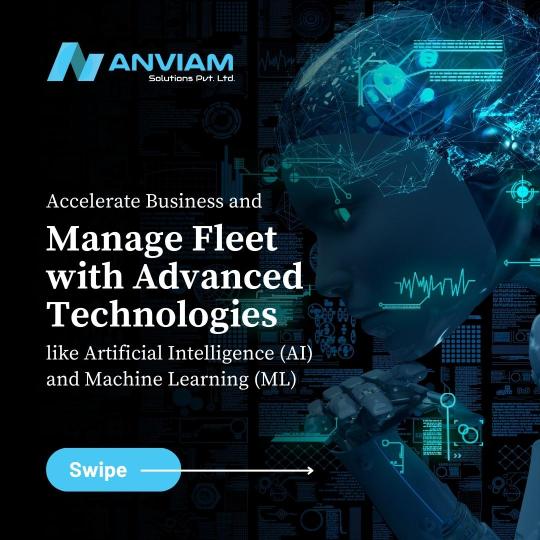
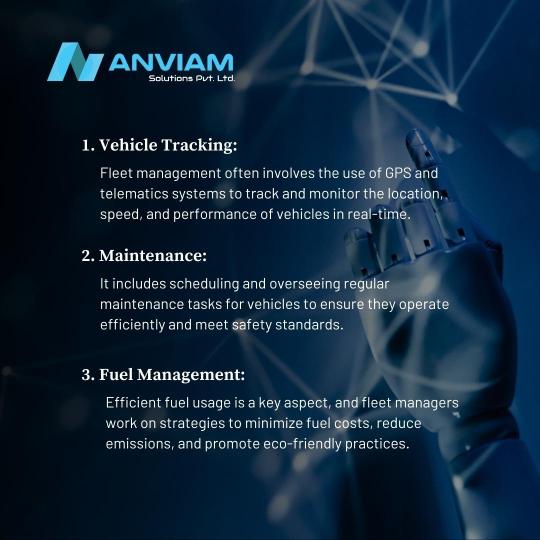
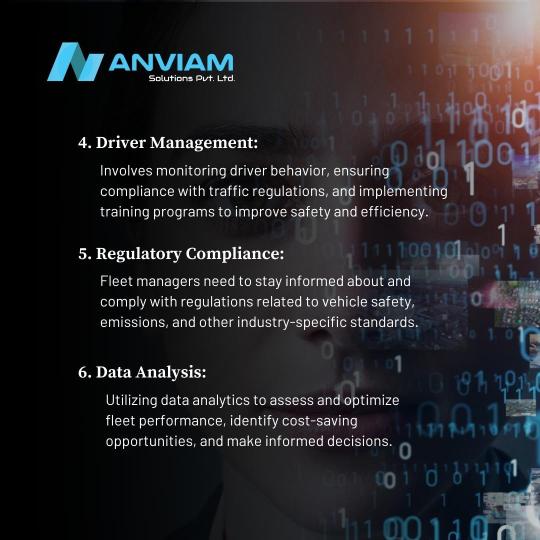

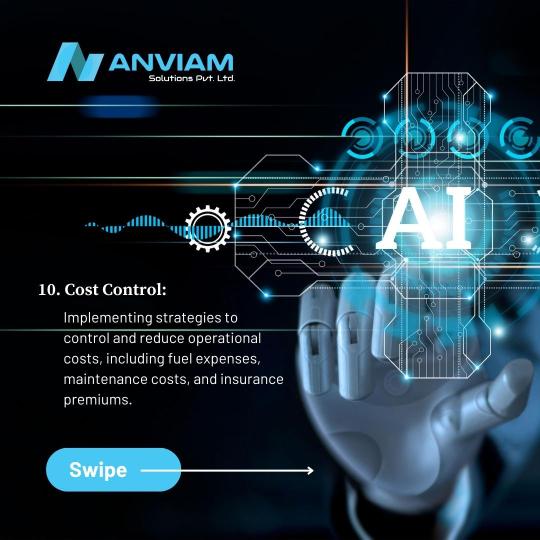

Accelerate Business and Manage Fleet with Advanced Technologies like Artificial Intelligence (AI) and Machine Learning (ML) : ➢ Vehicle Tracking ➢ Maintenance ➢ Fuel Management ➢ Driver Management ➢ Regulatory Compliance ➢ Data Analysis ➢ Asset Utilization ➢ Technology Integration ➢ Risk Management ➢ Cost Control Fleet management plays a crucial role in various industries where a fleet of vehicles is an integral part of daily operations, such as logistics, transportation, delivery services, and more. Contact us : 📞 +91-8360176682, +91-8054217664 🌐 www.anviam.com 📩 [email protected]
#fleet management#fleetmaintenance#anviamsolutions#anviam#objectives#software company#software development#app development#app design#app developing company#web design#webdevelopment#high maintenance#tracking software#tracking system#asset finance#fuel management system#fleet tracking#trending2023#digitalmarketing#business#blockchain#data analysis
0 notes
Text
Contractor Management System By HRsoft BD http://hrsoftbd.com/service-details/contractor-management-system

#online education#ballot counting software#coaching management software#contrctor management software#Vehicle Fleet Management Software#Time Attendance Software With SMS#Dynamic Website#Graphic Design#E-Education System#Online News Portal#E-Commerce Development#Ballot Counting Software#Advocate Diary Management System#Account Software For Hajj#Accounting Software#Dairy Farm Software#2#Courier Management Software Solutions#Contractor Management System#Employee / Human Resource Management System#EMIS (School Software)E-Commerce Solution#E-Class Web Application and Mobile App#Digital Education Management System#Digital Law Farm Web Application#EMIS (School Software)#E-Commerce Solution#Hotel Management Software#Hospital Management Software#Finger print and face detection#Event Management Software
1 note
·
View note
Text
Fleet Intelligence Just Got Better!
Having the ability to monitor and analyze data is very important when it comes to keep track of your fleet vehicles. For an organization to have an edge in the competitive market one need to have an insight of operational activities in your fleet. This insight can be achieved by making a connection between your asset and integrating telematics with your business systems. Eagle-I has integrated power BI to provide the insight of what’s happened in the past and what’s happening in the present, and what might happen in the future. The integration of Power BI has enhanced the machine learning capabilities of Eagle-I to spot patterns in data and use those patterns to make informed predictions allowing fleet managers to generate forecasts and prepare themselves to meet future demand and other key metrics of running smooth fleet operations. To read more of fleet management solutions in Saudi
#fleet maintenance#fleet management#tracking software#iotsolutions#iot#iot development services#internet of things
0 notes
Text
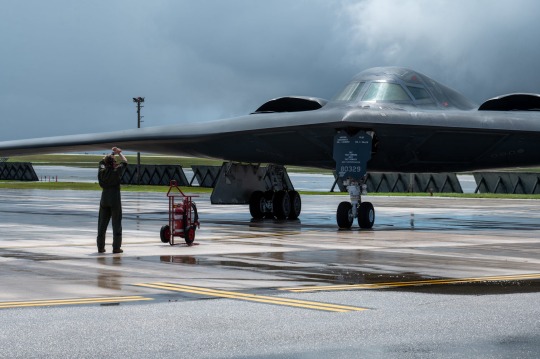
B-2 Gets Big Upgrade with New Open Mission Systems Capability
July 18, 2024 | By John A. Tirpak
The B-2 Spirit stealth bomber has been upgraded with a new open missions systems (OMS) software capability and other improvements to keep it relevant and credible until it’s succeeded by the B-21 Raider, Northrop Grumman announced. The changes accelerate the rate at which new weapons can be added to the B-2; allow it to accept constant software updates, and adapt it to changing conditions.
“The B-2 program recently achieved a major milestone by providing the bomber with its first fieldable, agile integrated functional capability called Spirit Realm 1 (SR 1),” the company said in a release. It announced the upgrade going operational on July 17, the 35th anniversary of the B-2’s first flight.
SR 1 was developed inside the Spirit Realm software factory codeveloped by the Air Force and Northrop to facilitate software improvements for the B-2. “Open mission systems” means that the aircraft has a non-proprietary software architecture that simplifies software refresh and enhances interoperability with other systems.
“SR 1 provides mission-critical capability upgrades to the communications and weapons systems via an open mission systems architecture, directly enhancing combat capability and allowing the fleet to initiate a new phase of agile software releases,” Northrop said in its release.
The system is intended to deliver problem-free software on the first go—but should they arise, correct software issues much earlier in the process.
The SR 1 was “fully developed inside the B-2 Spirit Realm software factory that was established through a partnership with Air Force Global Strike Command and the B-2 Systems Program Office,” Northrop said.
The Spirit Realm software factory came into being less than two years ago, with four goals: to reduce flight test risk and testing time through high-fidelity ground testing; to capture more data test points through targeted upgrades; to improve the B-2’s functional capabilities through more frequent, automated testing; and to facilitate more capability upgrades to the jet.
The Air Force said B-2 software updates which used to take two years can now be implemented in less than three months.
In addition to B61 or B83 nuclear weapons, the B-2 can carry a large number of precision-guided conventional munitions. However, the Air Force is preparing to introduce a slate of new weapons that will require near-constant target updates and the ability to integrate with USAF’s evolving long-range kill chain. A quicker process for integrating these new weapons with the B-2’s onboard communications, navigation, and sensor systems was needed.
The upgrade also includes improved displays, flight hardware and other enhancements to the B-2’s survivability, Northrop said.
“We are rapidly fielding capabilities with zero software defects through the software factory development ecosystem and further enhancing the B-2 fleet’s mission effectiveness,” said Jerry McBrearty, Northrop’s acting B-2 program manager.
The upgrade makes the B-2 the first legacy nuclear weapons platform “to utilize the Department of Defense’s DevSecOps [development, security, and operations] processes and digital toolsets,” it added.
The software factory approach accelerates adding new and future weapons to the stealth bomber, and thus improve deterrence, said Air Force Col. Frank Marino, senior materiel leader for the B-2.
The B-2 was not designed using digital methods—the way its younger stablemate, the B-21 Raider was—but the SR 1 leverages digital technology “to design, manage, build and test B-2 software more efficiently than ever before,” the company said.
The digital tools can also link with those developed for other legacy systems to accomplish “more rapid testing and fielding and help identify and fix potential risks earlier in the software development process.”
Following two crashes in recent years, the stealthy B-2 fleet comprises 19 aircraft, which are the only penetrating aircraft in the Air Force’s bomber fleet until the first B-21s are declared to have achieved initial operational capability at Ellsworth Air Force Base, S.D. A timeline for IOC has not been disclosed.
The B-2 is a stealthy, long-range, penetrating nuclear and conventional strike bomber. It is based on a flying wing design combining LO with high aerodynamic efficiency. The aircraft’s blended fuselage/wing holds two weapons bays capable of carrying nearly 60,000 lb in various combinations.
Spirit entered combat during Allied Force on March 24, 1999, striking Serbian targets. Production was completed in three blocks, and all aircraft were upgraded to Block 30 standard with AESA radar. Production was limited to 21 aircraft due to cost, and a single B-2 was subsequently lost in a crash at Andersen, Feb. 23, 2008.
Modernization is focused on safeguarding the B-2A’s penetrating strike capability in high-end threat environments and integrating advanced weapons.
The B-2 achieved a major milestone in 2022 with the integration of a Radar Aided Targeting System (RATS), enabling delivery of the modernized B61-12 precision-guided thermonuclear freefall weapon. RATS uses the aircraft’s radar to guide the weapon in GPS-denied conditions, while additional Flex Strike upgrades feed GPS data to weapons prerelease to thwart jamming. A B-2A successfully dropped an inert B61-12 using RATS on June 14, 2022, and successfully employed the longer-range JASSM-ER cruise missile in a test launch last December.
Ongoing upgrades include replacing the primary cockpit displays, the Adaptable Communications Suite (ACS) to provide Link 16-based jam-resistant in-flight retasking, advanced IFF, crash-survivable data recorders, and weapons integration. USAF is also working to enhance the fleet’s maintainability with LO signature improvements to coatings, materials, and radar-absorptive structures such as the radome and engine inlets/exhausts.
Two B-2s were damaged in separate landing accidents at Whiteman on Sept. 14, 2021, and Dec. 10, 2022, the latter prompting an indefinite fleetwide stand-down until May 18, 2023. USAF plans to retire the fleet once the B-21 Raider enters service in sufficient numbers around 2032.
Contractors: Northrop Grumman; Boeing; Vought.
First Flight: July 17, 1989.
Delivered: December 1993-December 1997.
IOC: April 1997, Whiteman AFB, Mo.
Production: 21.
Inventory: 20.
Operator: AFGSC, AFMC, ANG (associate).
Aircraft Location: Edwards AFB, Calif.; Whiteman AFB, Mo.
Active Variant: •B-2A. Production aircraft upgraded to Block 30 standards.
Dimensions: Span 172 ft, length 69 ft, height 17 ft.
Weight: Max T-O 336,500 lb.
Power Plant: Four GE Aviation F118-GE-100 turbofans, each 17,300 lb thrust.
Performance: Speed high subsonic, range 6,900 miles (further with air refueling).
Ceiling: 50,000 ft.
Armament: Nuclear: 16 B61-7, B61-12, B83, or eight B61-11 bombs (on rotary launchers). Conventional: 80 Mk 62 (500-lb) sea mines, 80 Mk 82 (500-lb) bombs, 80 GBU-38 JDAMs, or 34 CBU-87/89 munitions (on rack assemblies); or 16 GBU-31 JDAMs, 16 Mk 84 (2,000-lb) bombs, 16 AGM-154 JSOWs, 16 AGM-158 JASSMs, or eight GBU-28 LGBs.
Accommodation: Two pilots on ACES II zero/zero ejection seats.
21 notes
·
View notes
Text

The Vera C. Rubin Observatory will detect millions of exploding stars
Measuring distances across the universe is much more challenging than measuring distances on Earth. Is a brighter star closer to Earth than another, or is it just emitting more light? To make confident distance measurements, scientists rely on objects that emit a known amount of light, like Type Ia supernovae.
These spectacular explosions, among the brightest to ever be recorded in the night sky, result from the violent deaths of white dwarf stars and provide scientists with a reliable cosmic yardstick. Their brightness and color, combined with information about their host galaxies, allow scientists to calculate their distance and how much the universe expanded while their light made its journey to us. With enough Type Ia supernovae observations, scientists can measure the universe's expansion rate and whether it changes over time.
Although we've caught thousands of Type Ia supernovae to date, seeing them once or twice is not enough—there is a goldmine of information in how their fleeting light varies over time. NSF–DOE Vera C. Rubin Observatory will soon begin scanning the southern hemisphere sky every night for ten years, covering the entire hemisphere approximately every few nights. Every time Rubin detects an object changing brightness or position it will send an alert to the science community. With such rapid detection, Rubin will be our most powerful tool yet for spotting Type Ia supernovae before they fade away.
Rubin Observatory is a joint program of NSF NOIRLab and DOE's SLAC National Accelerator Laboratory, which will cooperatively operate Rubin.
Scientists like Anais Möller, a member of the Rubin/LSST Dark Energy Science Collaboration, look forward to Rubin's decade-long Legacy Survey of Space and Time (LSST), during which it's expected to detect millions of Type Ia supernovae.
"The large volume of data from Rubin will give us a sample of all kinds of Type Ia supernovae at a range of distances and in many different types of galaxies," says Möller.
In fact, Rubin will discover many more Type Ia supernovae in the first few months of the LSST than were used in the initial discovery of dark energy—the mysterious force causing the universe to expand faster than expected based on gravitational theory. Current measurements hint that dark energy might change over time, which—if confirmed—could help refine our understanding of the universe's age and evolution. That in turn would impact what we understand about how the universe formed, including how quickly stars and galaxies formed in the early universe.
With a much larger set of Type Ia supernovae from across the universe scientists will be able to refine our existing map of space and time, getting a fuller picture of dark energy's influence.
"The universe expanding is like a rubber band being stretched. If dark energy is not constant, that would be like stretching the rubber band by different amounts at different points," says Möller. "I think in the next decade we will be able to constrain whether dark energy is constant or evolving with cosmic time. Rubin will allow us to do that with Type Ia supernovae."
Every night Rubin Observatory will produce about 20 terabytes of data and generate up to 10 million alerts—no other telescope in history has produced a firehose of data quite like this. It has required scientists to rethink the way they manage rapid alerts and to develop methods and systems to handle the large incoming datasets.
Rubin's deluge of nightly alerts will be managed and made available to scientists through seven community software systems that will ingest and process these alerts before serving them up to scientists around the world. Möller, together with a large collaboration of scientists across expertises, is developing one of these systems, called Fink.
The software systems collect the alerts from Rubin each night, merge Rubin data with other datasets, and using machine-learning, classify them according to their type, such as kilonovae, variable stars, or Type Ia supernovae, among others. Scientists using one of Rubin's community systems, like Fink, will be able to sort the massive dataset of alerts according to selected filters, allowing them to quickly home in on the data that are useful for their research.
"Because of the large volumes of data, we can't do science the same way we did before," says Möller. "Rubin is a generational shift. And our responsibility is developing the methods that will be used by the next generation."
7 notes
·
View notes
Text
Many of our clients and other businesses have to deal with different fleet management activities, and we understand how it is important to have more automation and control over the fleet management process. That is why, in today’s article, we will take a more precise look at the trends that are happening in the fleet industry. Let’s see which Vehicle Telematics trends are able to change your tracking processes in 2024 to the better.
#outsourcing#software development#web development#staff augmentation#custom software development#it staff augmentation#custom software solutions#it staffing company#it staff offshoring#custom software#fleet management#gps fleet management#vehiclemanagement
0 notes
Text
youtube
Alpha Blaster is a fixed shooter video game developed by Dave Aron at Sumlock and originally published by LiveWire Software for the VIC-20 in 1983. In 1984, Aackosoft International B.V. adapted and released the game for the MSX platform.
In the game, players take control of a Federation battle cruiser tasked with defending against an alien invasion fleet from the planet Alpha. The gameplay involves piloting the cruiser to destroy flying saucers and other enemy spacecraft using a laser cannon. Strategic resource management plays a key role, as both laser energy and fuel are limited.
After surviving two waves of enemy attacks, players must navigate an asteroid belt, dodging and destroying debris. Successfully passing through the asteroid field allows the cruiser to dock with a supply ship to replenish ammunition and fuel. The game’s difficulty ramps up with each completed cycle, presenting increasingly challenging scenarios.
Interestingly, the first two waves of the four total cycles feature enemies with different appearances but identical behavior. After completing all four cycles, the game resets itself to the first one, creating a continuous loop.
I particularly praise the MSX version for maintaining the core gameplay elements of the original VIC-20 release while refining the experience. It offers an engaging arcade challenge with a compelling science fiction theme that feels perfectly suited to the MSX platform.
#retro gaming#retro gamer#retro games#video games#gaming#old school gaming#old gamer#gaming videos#youtube video#longplay#back to the past#I want to go back#those were the days#good old days#msx#space shooter#alpha blaster#video gaming#gamer for ever#gamer for life#Youtube
2 notes
·
View notes